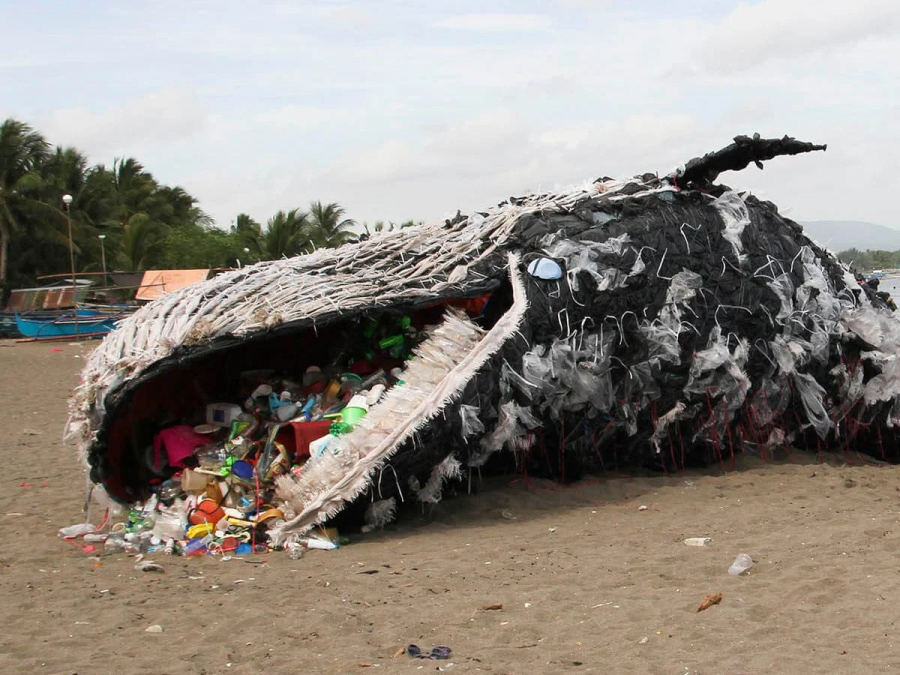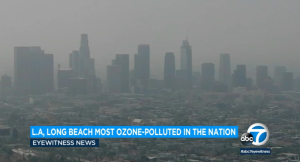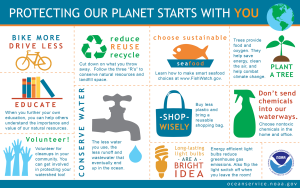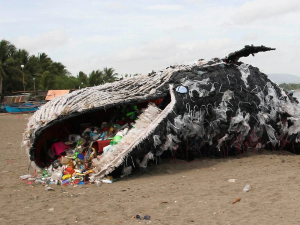
Plastics have been around for more than a hundred years by now.
Most of us, including scientists, have started taking them as a matter of course. But, according to a recent study, global production and consumption of plastic products has increased 20 fold in the last 50 years, which has become a serious threat to the environment.
An average American throws away close to 6,000 plastic bags per year. Plastic bags and other plastic materials that are thrown away go straight to the landfills, where it takes hundreds of years for them to break down, if at all. In fact, a large chunk of it ends up in the oceans and kills thousands of birds and marine animals every year.
The Impact Of Plastic Bags On The Environment
A single-use plastic bag is used for an average of 12 minutes, but takes thousands of years to break down into natural elements once discarded. These bags are also a threat to marine life and wildlife.
According to the New York Times, approximately 100,000 marine mammals die each year from ingesting or becoming entangled in plastic pollution.
A recent report by the United Nations Environment Program has revealed that plastic debris causes the deaths of more than one million seabirds every year. There are solutions that can be adopted to reduce the effects of plastic pollution, such as using reusable bags, investing in biodegradable bags, and encouraging help from governments.
The Impact Of Plastic Bottles On The Environment
The impact of plastic bottles on the environment has recently gained tremendous attention because of their widespread use. Currently, most of the packaging material used for water and other drinks is made of plastic which often ends up as waste in landfills, instead of using a dumpster rental to bring them to a recycling faciliy.
This, in turn, causes severe environmental pollution. A plastic bottle may take hundreds of years to decompose. But the situation is not hopeless. Creative people are coming up with ways to convert this menace into something useful. You can also use them to make arts and crafts projects.
The Dangers Of Plastic
According to dumpster rental experts at a Cleveland waste management service company, there are many dangers of plastic, and this is why public awareness must to improved rapidly to avoid a waste management catastrophis.
The main ones being BPA (Bisphenol A), phthalates, and brominated flame retardants. BPA can cause breast cancer. Phthalates can cause reduced IQ and developmental issues amongst children. Brominated flame retardants also have the potential to cause a range of issues from birth defects to cancer.
What Can You Do To Reduce Plastic Usage
Be mindful of what you buy and avoid unnecessary packaging.
It is easier to reduce plastic usage. Simply trying to always buy products that are not wrapped in unnecessary plastic packaging can help. Nearly 44% of plastic is used for packaging.
You can always choose to buy a product that comes in a suitable reusable container instead of a single-use plastic packaging. If you don’t see a reusable container available, ask the store manager or the manufacturer why or better yet, offer them an incentive to create a reusable product container.
Another effective way to reduce plastic is to sign petitions, submit comments or contact your representatives to lobby for policy changes.
Do All Plastics Get Recycled
No, not all plastics get recycled.
This is due to the type of plastic and where it is disposed. Plastics can be classified into four categories. The first is HDPE (High Density Polyethylene) which is used in milk jugs, detergent bottles and grocery bags. The second is PVC (Polyvinyl Chloride) that is used in pipes and plastic shopping bags.
The third is LDPE (Low Density Polyethylene) which is used in squeezable bottles. The fourth is PP (Polypropylene) which is used in Tupperware, yogurt and margarine containers.
These are all recyclable plastics. These plastics are highly recyclable and can be used in products as many times as possible. However, there are some types of plastics that are not recyclable. These are PVC pipes, disposable diapers, medical devices and electronics. If a plastic is not recyclable, it is made of more than one type of plastic, and one need to use a dumpster rental to bring them to a landfill.
What Happens To Unrecycled Plastic
The waste management issue of unrecycled plastic is a major problem in our environment because plastic take up to a thousand year to decompose.
Plastics that are not recycled will remain in landfills or pollute the oceans, killing marine animals. In addition, many animals eat the plastic material not knowing that they are harmful to their health.
For example, marine animals will often mistake plastic bags for jellyfish. This causes them to choke on the plastic that they eat. In the short-term, plastic temperature can also cause sickness to both animals and humans.




